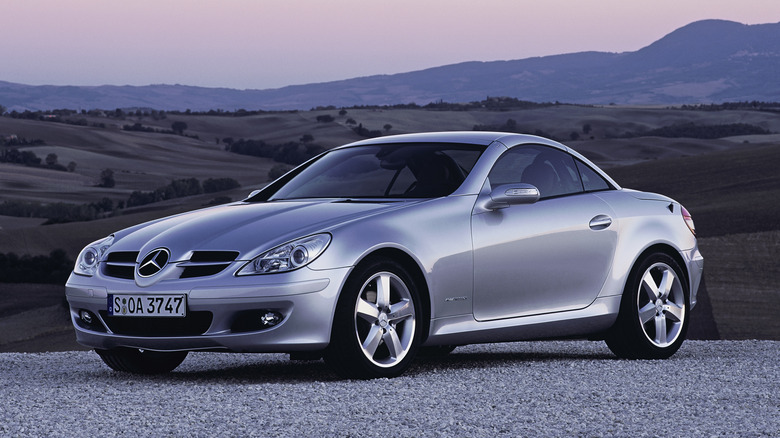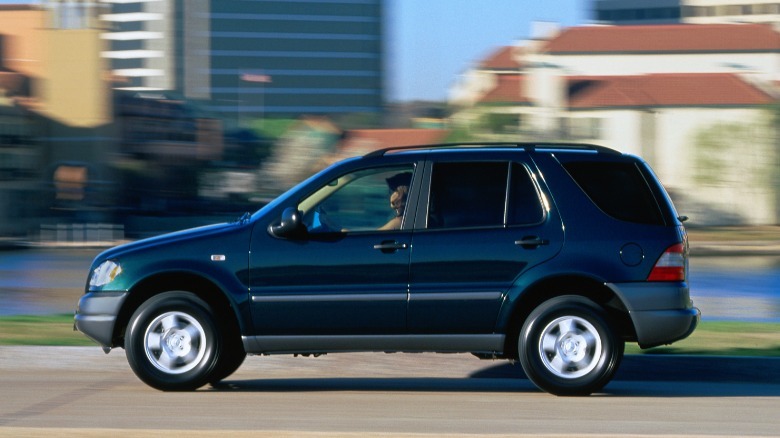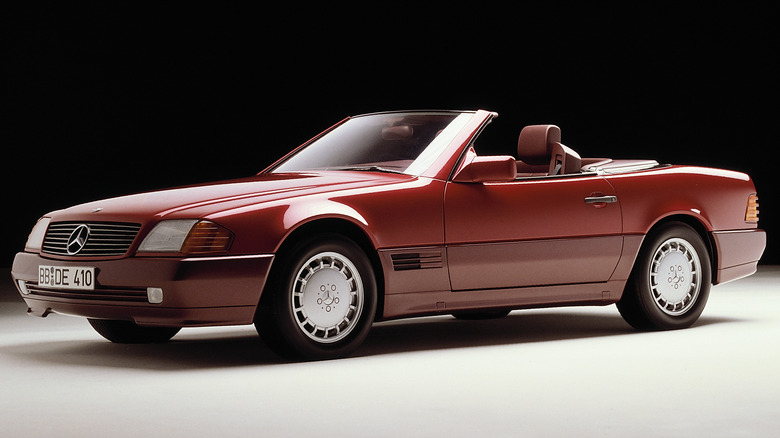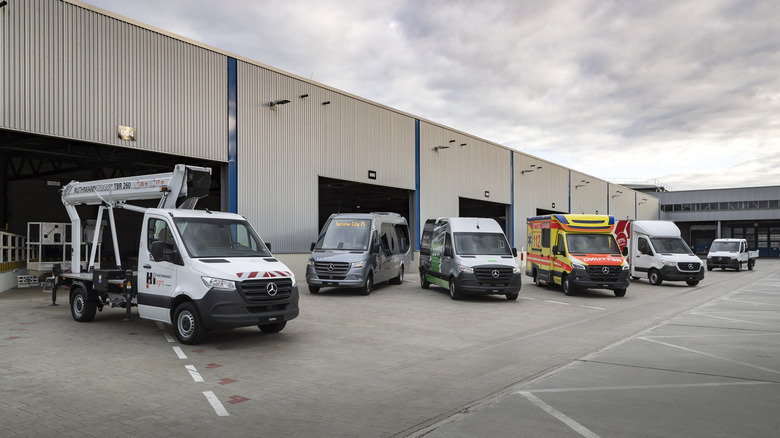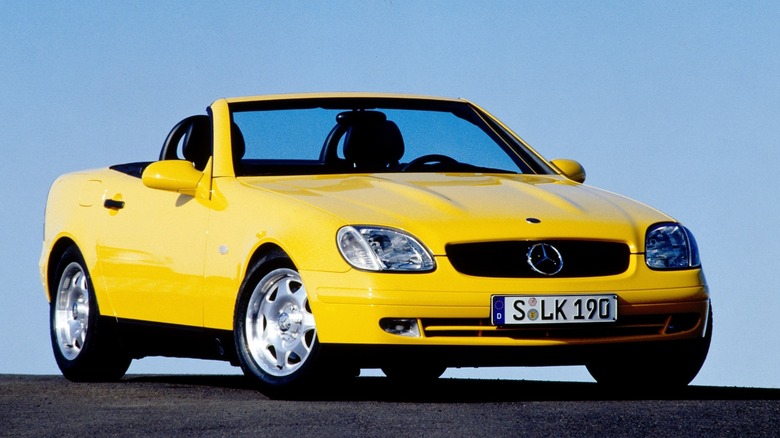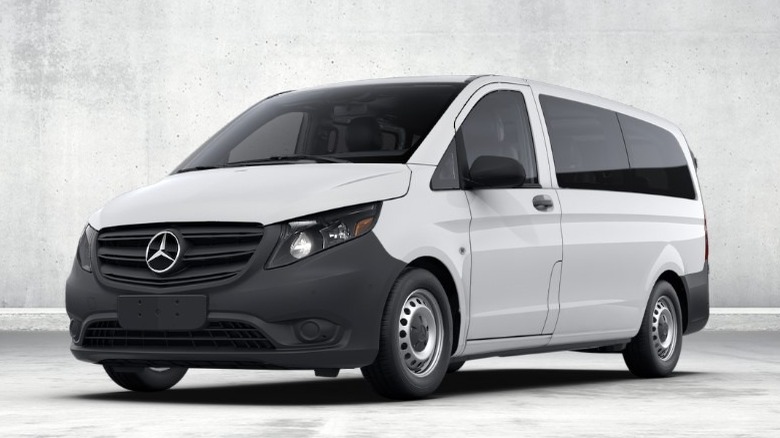5 Of The Most Underrated Mercedes-Benz Models Ever Made
Mercedes-Benz is one of the most celebrated automakers of all time, and one of the oldest car companies to exist, dating back to Karl Benz when he decided that internal combustion engines were better than horses in 1890. Over the company's long history, it's hard to find any cars that are conventionally "bad" in the same way a Pontiac Aztek was less than desirable. In fact, it's quite the opposite, the Mercedes-Benz vast catalog of products is full of cars that, in retrospect, are quite a lot better than they were initially given credit for.
Any Mercedes auction is bound to be full of classic roadsters and AMG cars with obscene amounts of horsepower. But it's unlikely you'll see a first-generation Mercedes-Benz M-Class behind bullet-resistant glass at museums or reaching eight figures at an auction like its siblings from the same marque. The American public first became aware of the M-Class in 1997 when it featured in the Jurassic Park: Lost World sequel where it experienced a litany of dinosaur-related mishaps. But in reality, it's a compact and comfortable off-roader that isn't as ostentatious as gargantuan truck-based SUVs from the era.
Mercedes-Benz SL (R 129)
The Mercedes SL roadsters have always been an example of the best the brand had to offer. The original gull-wing 300 SL from the 1950s is often heralded as one of the best-looking cars ever made. That car inspired the legendary Mercedes SLS AMG.
When the 1990s rolled around, Mercedes debuted its new SL with the internal designation of R 129. This generation, made from 1989 to 2001, was a departure from the long swooping lines and curves of previous SLs. To detractors, it looked like a fiberglass shovel and not a German roadster. Looks aside, the 300 SL base model for the first model year had a 190 horsepower six-cylinder engine and could accelerate from o to 60 miles per hour in 9.3 seconds. Not particularly quick, but a manual transmission combined with the SL's lightweight meant a lot of fun canyon carving. However, starting in 1992, it was available with a V12 that threw down 394 horsepower and could rocket to 60 in 6.1 seconds, a speedy time for over 30 years ago.
In addition to a big V12, this generation saw the addition of automatic roll bars that would spring up when the car detected it was upside down.
Mercedes-Benz Sprinter
Mercedes is not often the first brand people think of when considering utility vans. When the van was first offered in the United States in 2001, it wasn't even badged as a Benz, but instead wore Dodge and Freightliner badges until 2010 when the three-pointed star returned to the grille. The Sprinter van in all iterations is one of the few vehicles that can either act as a bus to pick up senior citizens for bingo night or haul the entire inventory of a plumbing store while out on a job.
Sprinters are available in a wide array of body styles, ranging from chassis cab configurations for box trucks, high-roof cargo vans for tradesmen, or multi-passenger buses for homeschool moms. Its diesel engine choices across all generations were not particularly fast, but when you're getting paid by the hour, speed's not that important. Mercedes still makes the Sprinter and it can be configured with a 170-inch wheelbase and all-wheel drive. It may look like a beluga whale, but it can carry just about anything.
Mercedes-Benz SLK
The Mercedes SL roadster steals all the spotlight among Mercedes sports cars. But that doesn't mean the smaller SLK roadster isn't worth its salt, even if Mercedes doesn't sell it anymore. The diminutive roadster first showed up in 1996 and by 2000 could be AMG-ified with a supercharged V6 that produced 349 horsepower, an absolute riot in a car that weighs about 3,100 pounds. For the 2005 model year, it was redesigned to look almost like a tiny Mercedes-McLaren SLR with its nose-mounted grille badging. The AMG version benefitted from a V8 that threw down 355 horsepower to the rear wheels.
The SLK took everything great about the SL and made it smaller and more compact, like a German built-Miata. 2016 was the last model year for the mini-Mercedes and given the brand's move towards electric vehicles and the recent cuts made to the lineup, it's unlikely the car-buying public will see a tiny roadster like the SLK from the brand anytime soon.
Mercedes Metris
The Mercedes Metris is another vehicle wearing the star badge that doesn't always get the credit it deserves. First, it can be configured as an eight-passenger minivan, making it much more useful for carrying people around than some much larger SUVs. Secondly, the right-hand drive Metris vans, built in South Carolina, have also been adopted in some regions by the United States Postal Service for mail truck duty, making it perhaps one of the most useful compact vans currently on the market.
The van itself is much like a scaled-down Sprinter for when you don't need a van that can fit a planet in the back. In addition to a more conventional cargo van or minivan setup, the Metris can be fitted to include a wheelchair ramp and a number of other accessibility options right from the factory. Plus, it can be fitted with all manner of solar panels, portable kitchens, and awnings for the ultimate VanLife option.
